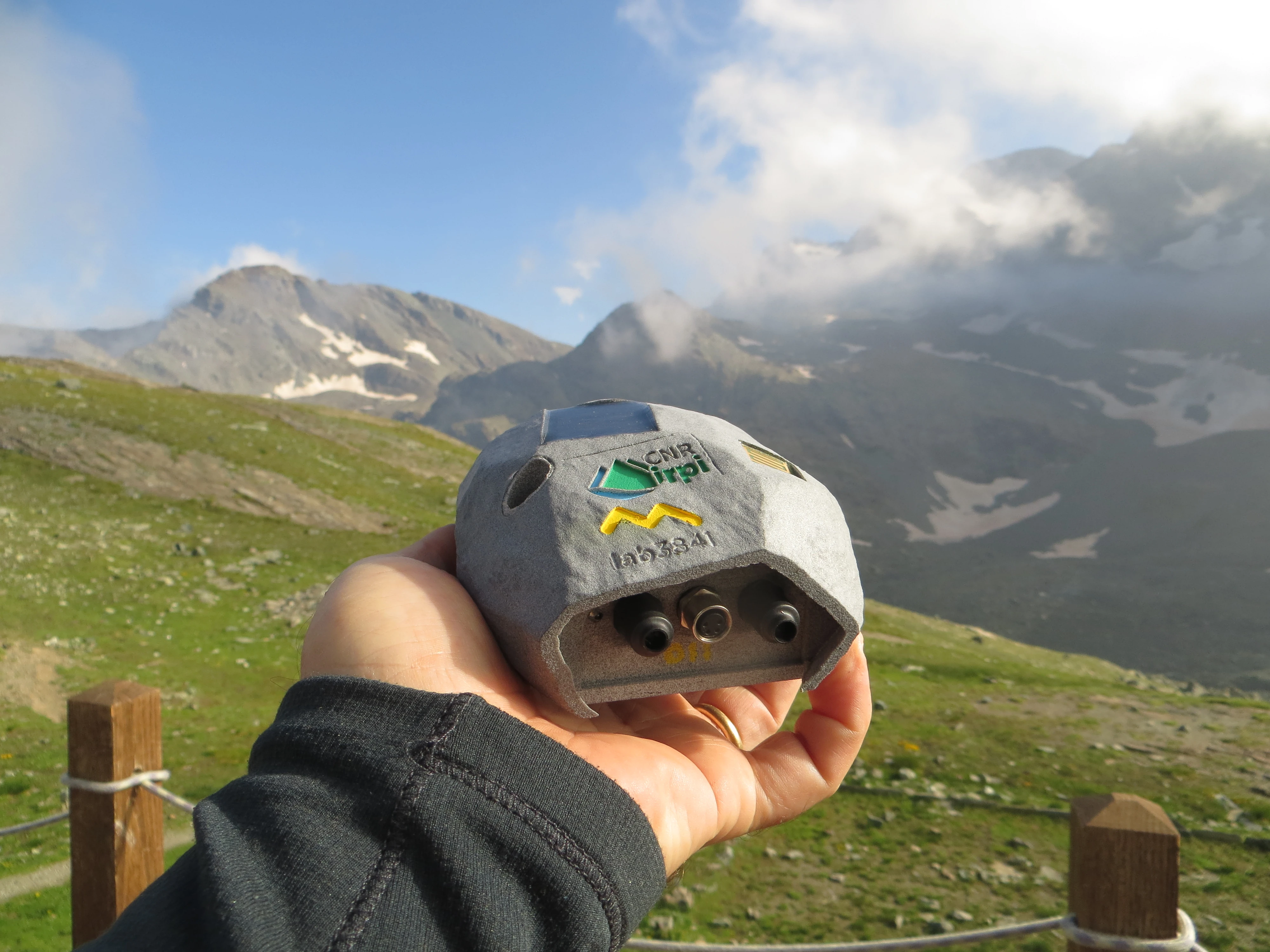In depth
With Pera® we monitor climate change on the Bessanese basin

The Bessanese glacial basin is our high altitude equipped experimental area, where we conduct research, experimentation, training and outreach activities. Here there is an automatic meteorological station, operated by ARPA Piemonte and active since 1988. The data acquired from this station constitute the climatic reference for our research.
In order to study in detail the phenomena occurring in glacial and periglacial environments, two new installations were made in August 2024, at different elevations, at different exposures, but in the same lithotype (Prasinite).
We chose Pera®, an innovative device designed by lab3841, equipped with sensors specifically selected to provide useful information for the study of freeze-thaw cycles affecting rock. The measurements, recorded continuously and accurately, are transmitted in near real time and made freely available in this web application.
Pera #011 is located just below the top of the Uja of the Bessanese, on the Spigolo Murari, at an elevation of about 3473 m and measures:
- the global solar radiation, incident on the rock
- the temperature inside the rock at three different depths: 10 cm, 30 cm and 50 cm
The temperature sensors were calibrated at INRiM before installation and guarantee a residual uncertainty of 0.03°C in the range -20°C ~ +40°C.
With the data collected, it is possible to measure the solar energy incident on the rock and understand how the temperature within it propagates at different depths, characterizing its behavior from a thermal point of view.
Rock temperature measurements can also be very different from the air temperature measurements we are used to reading in weather reports.
Indeed, on sunny days, it is common for the temperature of the rock reaches high temperatures, due to the different conduction characteristics of the heat.
Pera® is a completely energy autonomous device, as it collects the energy necessary for its operation from the sun. It is also perfect for blending seamlessly into the landscape, thanks to its small size and rock-like appearance.
It has been successfully deployed in a similar monitoring project launched in 2022, called #OperationMonviso, which aims to monitor the effects of climate change on the most iconic Piedmontese mountain. Again, the data collected are made available on a web application, freely available for consultation by citizens and research organizations, in order to raise awareness of issues related to climate change.
Project 20223MKEMB_PE10_PRIN2022 - PNRR M4.C2.1.1, Rockfall risk mitigation in the Alps, Financed by the European Union - Next Generation EU